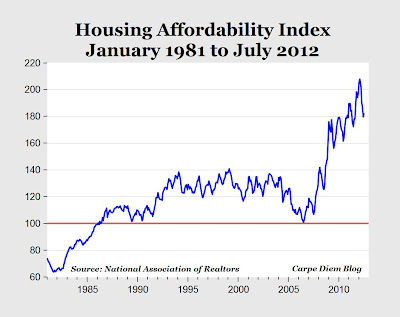Major CD Announcement
Dear Carpe Diem Regulars:
Over the next several days, there will be some major changes taking place for the Carpe Diem blog. After six years, almost 10,000 posts, and more than 8 million visits and almost 12 million page views using the Blogger platform, Carpe Diem will become a WordPress blog at a new website.
Starting within the next few days, Carpe Diem will be exclusively hosted by The American Enterprise Institutes's new AEIdeas website, which also features Jimmy Pethokoukis's blog as well as other AEI blog "channels" by topic (Economics, Foreign and Defense Policy, Politics and Public Opinion and Society and Culture). Many of the AEI scholars and fellows now regularly blog in the topic areas of the AEIdeas blog including Charles Murray, Andrew Biggs, Marc Thiessen, Michael Auslin, Mackenzie Eaglen, Dani Pletka, Nick Schulz, Karlyn Bowman, Alex Pollock, Ken Green and Arthur Brooks, among others.
Here’s how the relocation of Carpe Diem will affect you:
1. If you have the current Carpe Diem website bookmarked, you’ll be automatically re-directed to the new website and you won’t need to do anything. (Here's a direct link to the new Carpe Diem website.)
2. If you subscribe to the daily email updates of Carpe Diem posts, you should still receive those emails with a summary of posts over the last 24 hours from the new AEIdeas website.
3. If you regularly (or occasionally) leave comments on Carpe Diem, you can still easily make comments at the new AEI website, by providing a name and email address (the email address won’t be published). The comments at the AEIdeas website are moderated before appearing on the AEI website, and I’ll do my best to help with the moderation process to be sure your comments appear as quickly as possible.
4. All of the 9,000 posts in the Carpe Diem archives have been moved to the new AEIdeas website, so they will still be available and searchable by key word.
5. If you follow Carpe Diem by RSS feed, here's the link to the new Carpe Diem RSS feed.
Thanks for your loyal readership and I hope you continue to follow Carpe Diem at its new home!













